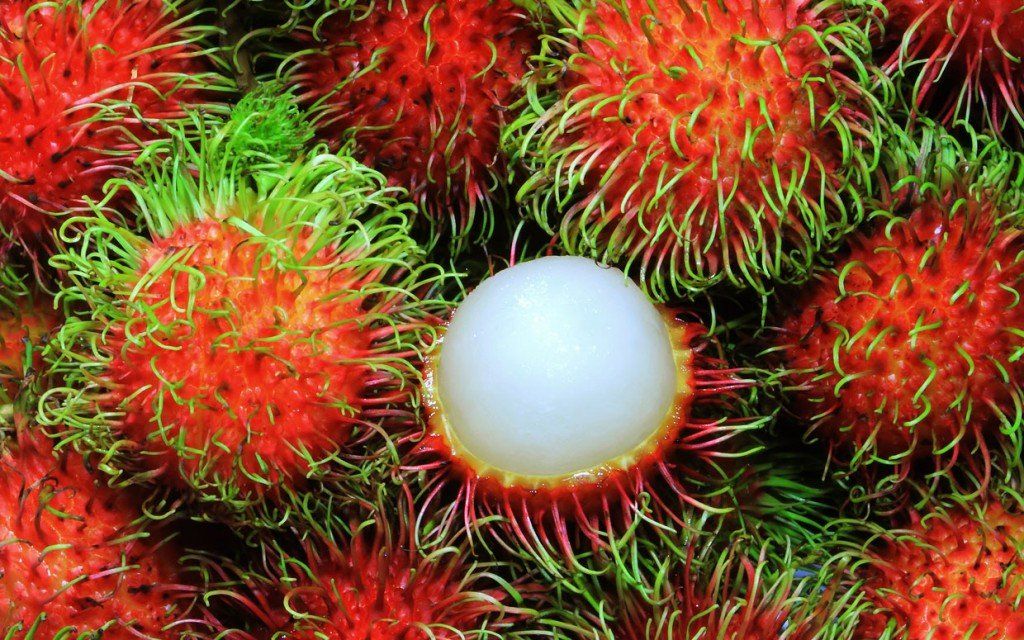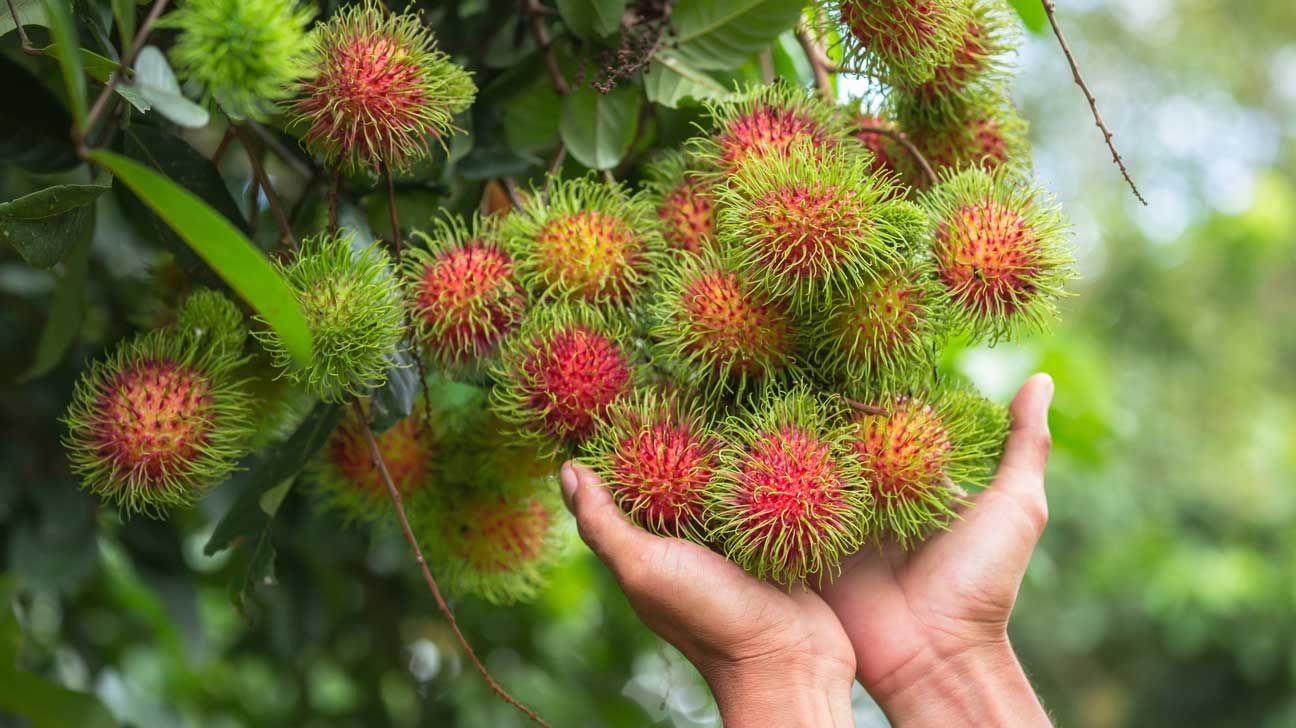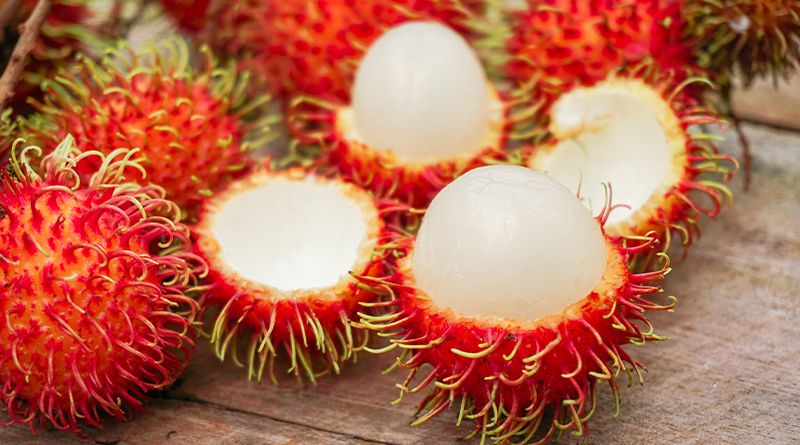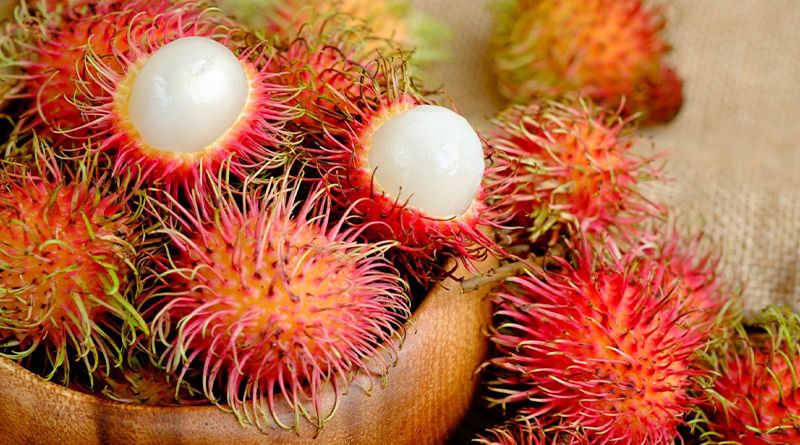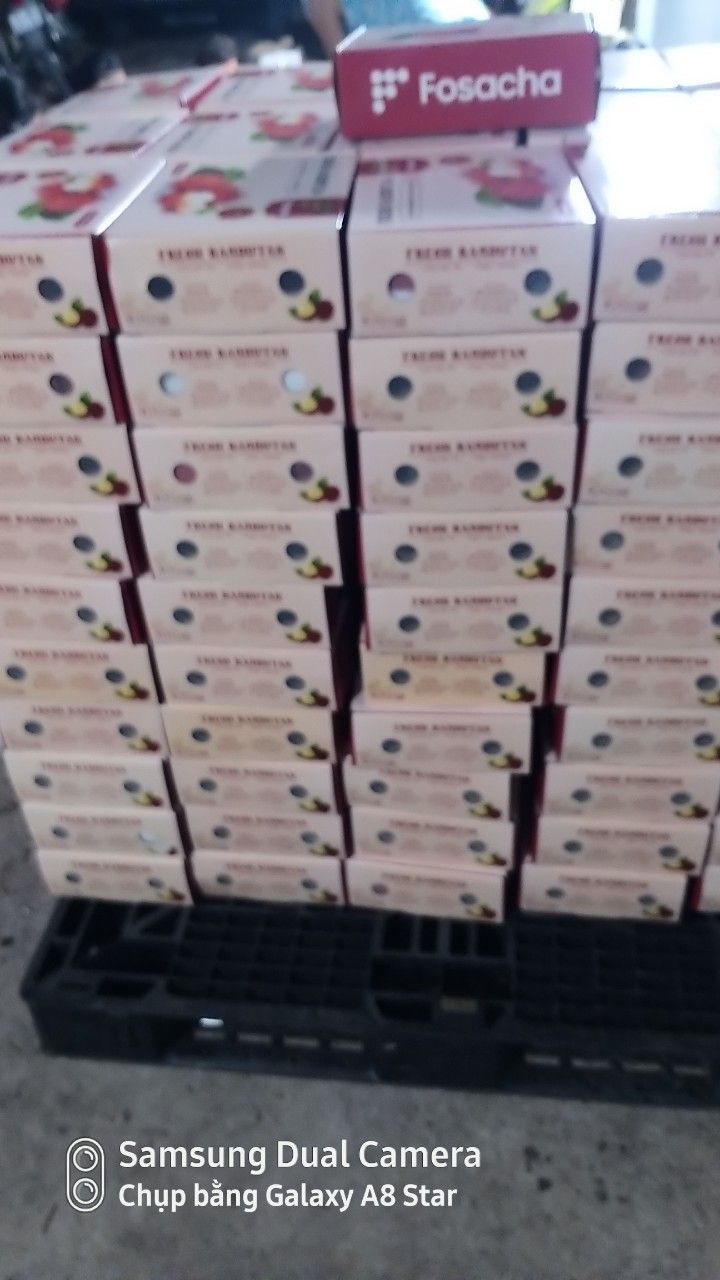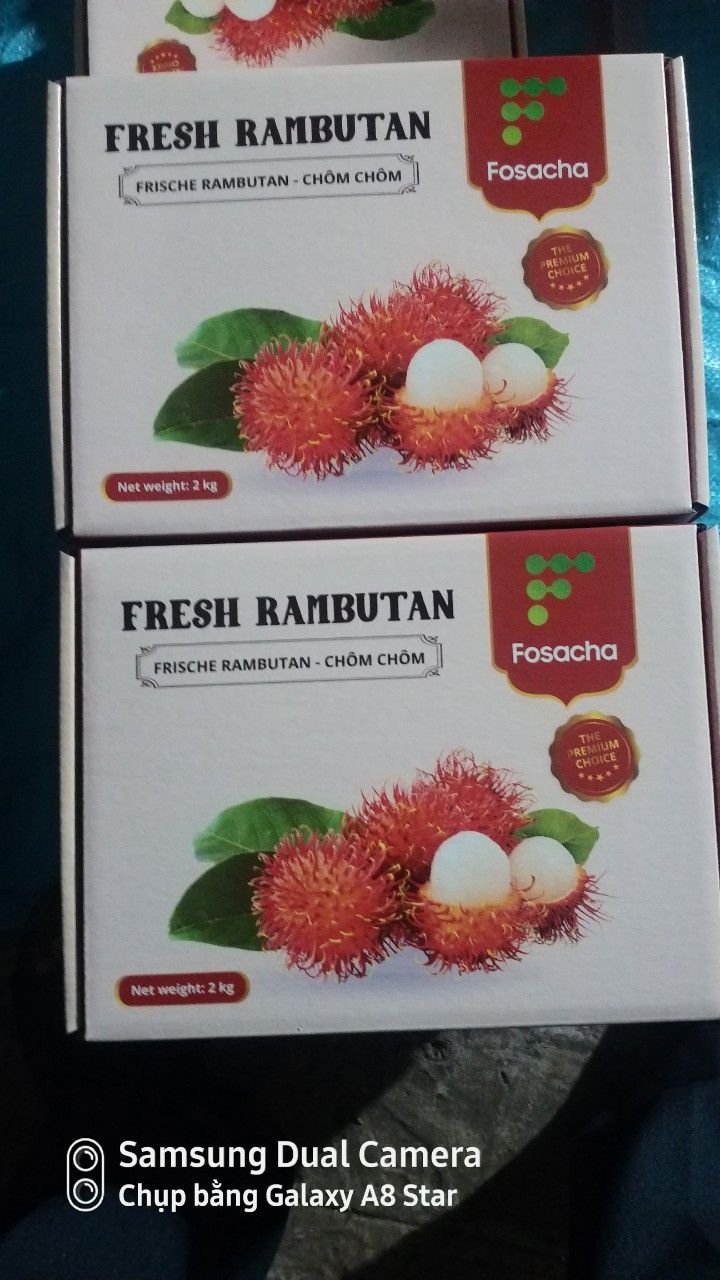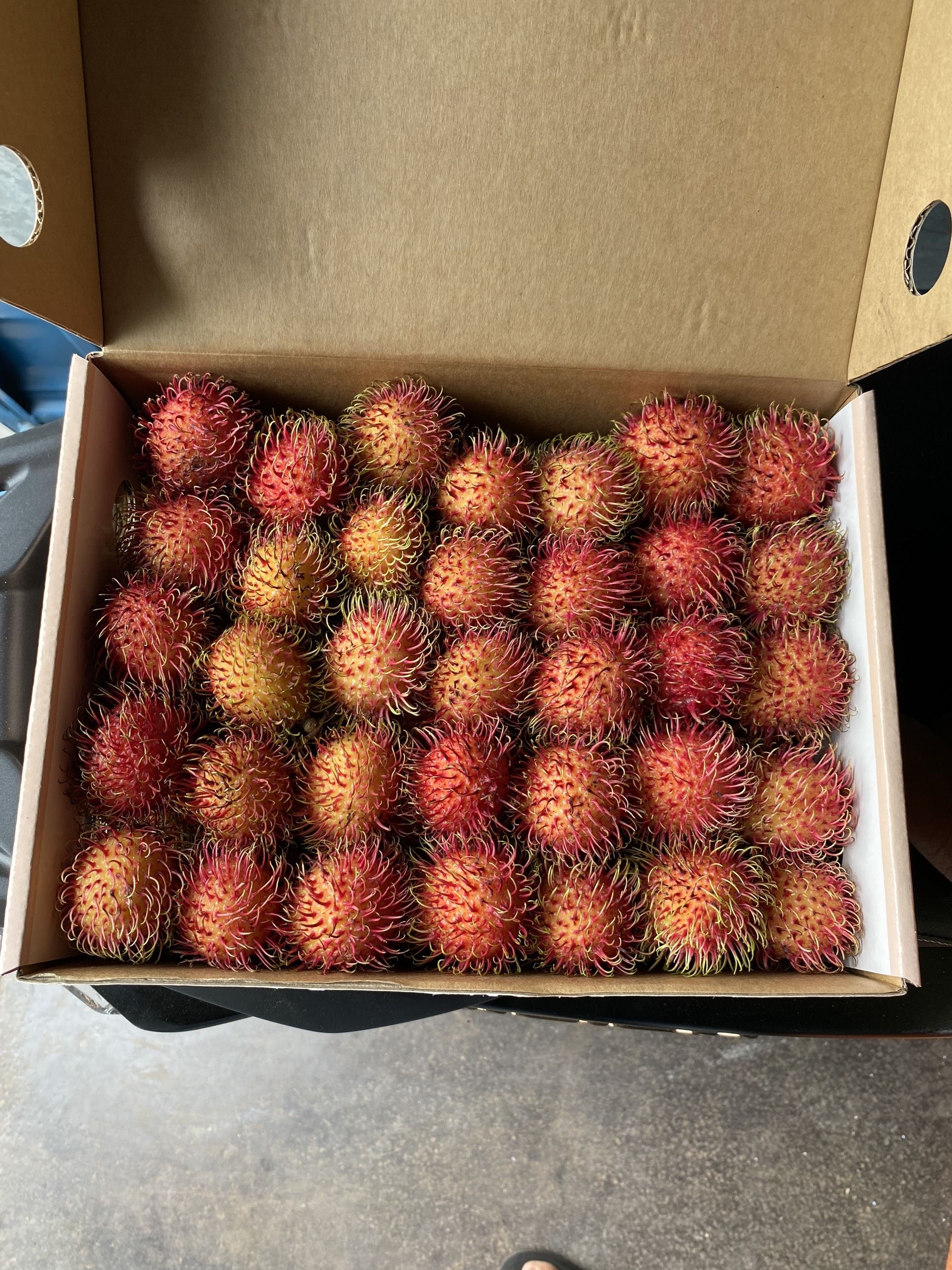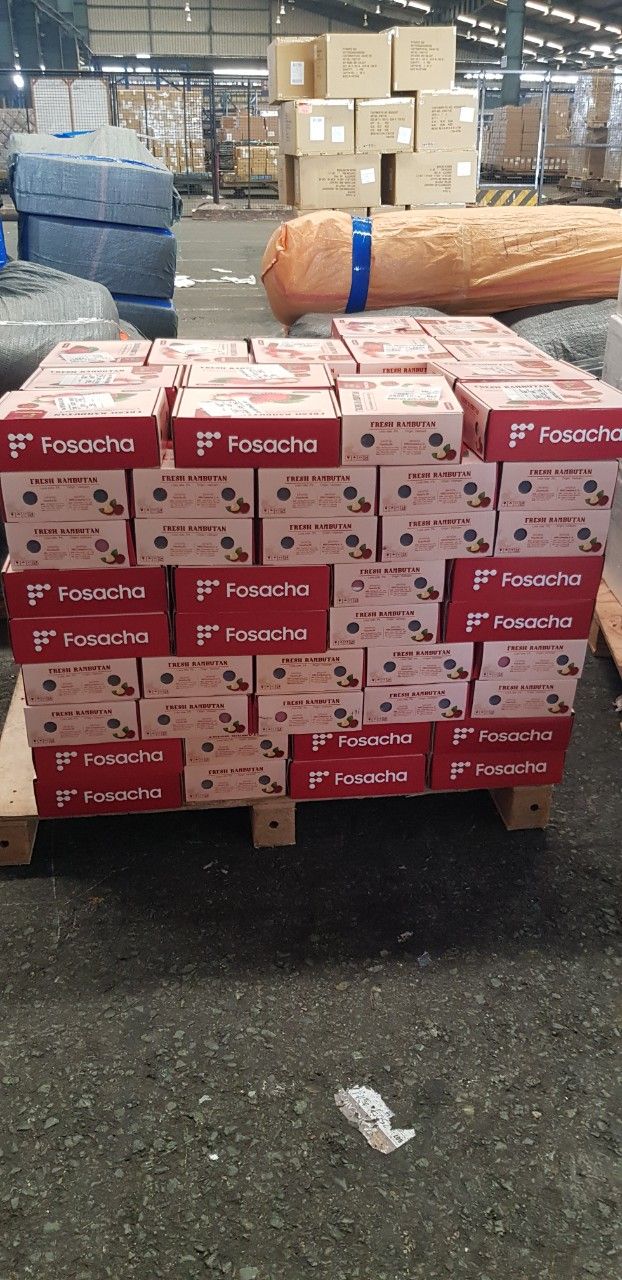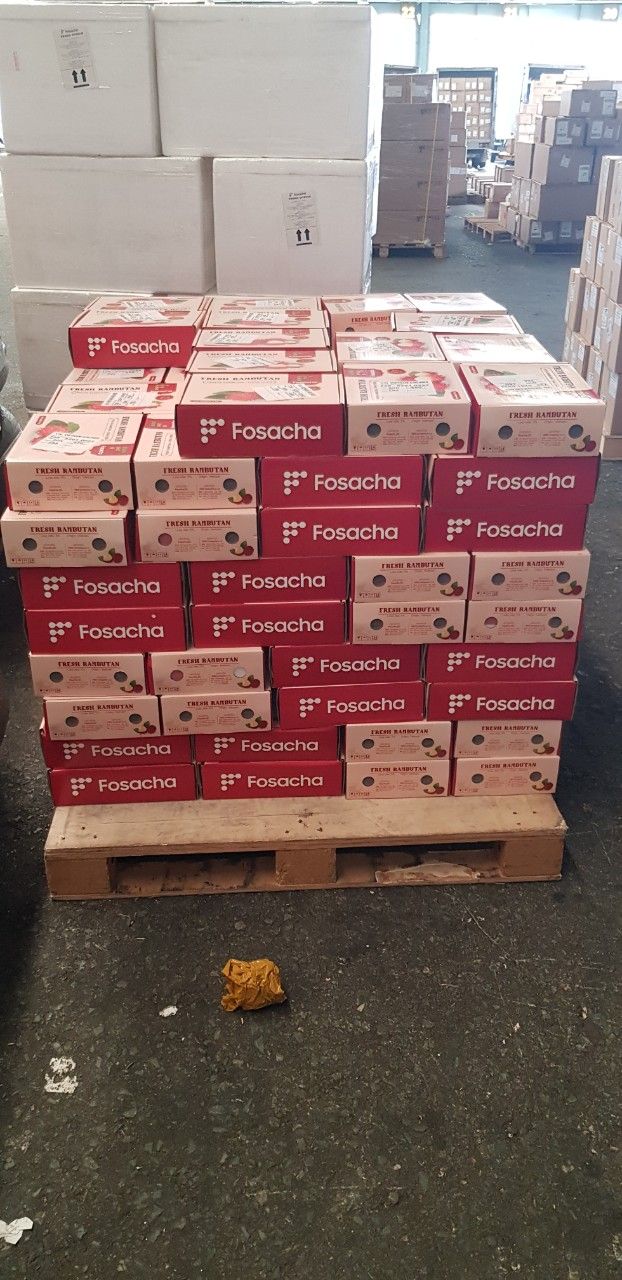RAMBUTAN
Rambutan is a tropical fruit that is originated from the Southeast Asia. The name comes from a Malay word, meaning “hair”, referring to the fruit’s unique appearance. Rambutan is small in size and has a round oval shape. The leathery skin is reddish (rarely orange or yellow) and covered with fleshy pliable spines, that resembles a sea urchin. The vibrant and hairy exterior hides white translucent flesh with a mild sweet and sour flavor, similar to a grape. Enjoyers can never resist the urge to eat another rambutan after the first bite
 Passport
Passport
 How to eat
How to eat
Rambutan can either be enjoyed fresh or used as an ingredient in a host of different recipes and scenarios, such as salad, sweet soups, jellies, ,,,,
How to eat a fresh Rambutan:
Cut the skin. Make a small incision in the “hairy” outside flesh of the fruit. Lightly squeeze the exterior to pop out the edible inner portion. It will appear similar to a large, white grape.
Discard the seed. Make another small cut into the edible flesh of the fruit so that you can rid yourself of its large inner seed. If this raw seed pops out easily, you’re dealing with a freestone version of this plant; if it seems difficult to extract, then the rambutan is a clingstone. Beyond these two classifications, there are hundreds of different cultivar names and many different types of these plants.
Enjoy your rambutan. You can now enjoy the edible portion of the rambutan
 Health benefit
Health benefit
Rambutan fruit is rich in minerals, vitamins, and other beneficial plant compounds, including fiber, Vitamin C, Copper, Kali, iron, and zinc. These minerals and vitamins help to support strong bones promote weight loss, and provides compounds with anti-parasitic properties. Rambutan can improve the digestive system because they contain both types of fiber, (soluble and non-soluble), which reduces the risk of constipation and provides nutrients for the beneficial bacteria in the intestinal tract. Moreover, the fruit can help strengthen the immune system in many ways. The Vitamin C in the fruit helps promote the production of white blood cells and helps the body to fight against infections.
 Export Overview
Export Overview
Along with lychee, dragon fruit, banana, mango, ... rambutan has also become a commodity with great potential for export, bringing significant profit to Vietnam's export industry. Currently, this type of agricultural product is being favored in many markets and has more development opportunities in major countries around the world. Vietnamese rambutan has entered many overseas markets, such as South Korea, the United States, Australia, China, Japan,...
 What’s FOSACHA
What’s FOSACHA
The rambutan is a special delicacy of Vietnam, so it’s no surprise that it is one of the agricultural products that FOSACHA has chosen to export to the global market. FOSACHA works closely with our farms throughout the production process, from planting, harvesting to sorting, grading the top quality of the rambutan for any potential importers from international markets. The packaging follows international standards. FOSACHA is confident that we will always provide our customers with high-quality products that satisfy global consumers.
Moreover, FOSACHA provides a solution to all the challenges of establishing a traceability system with unlimited information. The information that has been updated on the system cannot be changed, suitable for product traceability. Thereby the importers will not worry about the product’s origin.
If you are looking for a reputable supplier to import high quality, VietGAP, GlobalGAP compliant Vietnamese shallot with stable yield, as well as establishing a long-term, mutually beneficial partnership, please contact us at the following information for further discussion
Company: FOSACHA Joint Stock Company
Address: 130 Nguyen Duc Canh Str, Tan Mai Ward, Hoang Mai District, Hanoi, Vietnam
Tel: (+84) 869330380
Website: https://fosacha.com/
Email: info@fosacha.com
 Storage advice
Storage advice
Stored in a cool, dry place at 6 to 8°C (Fresh) and at -20 ±2°C (Frozen)
 Availability
Availability









